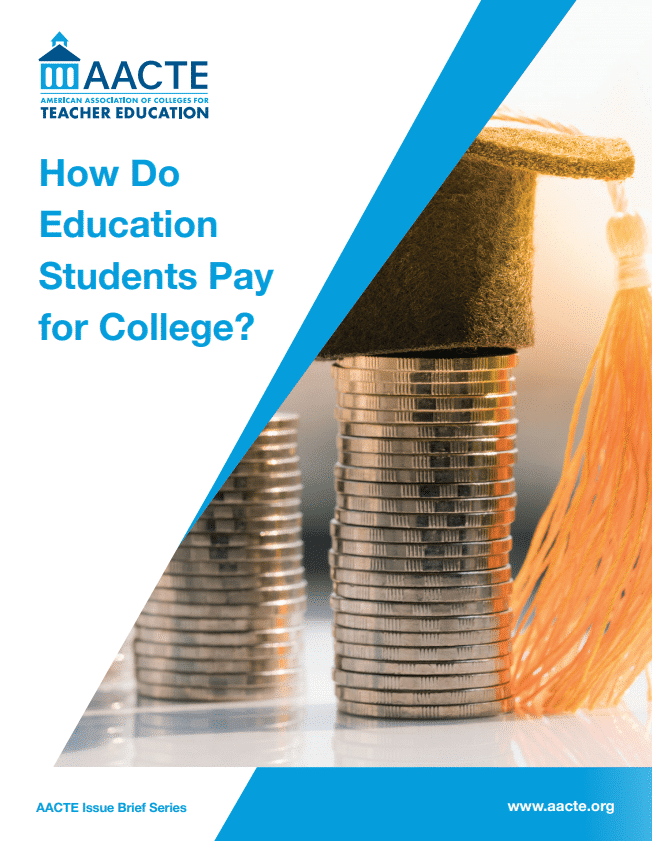Issue Brief: How Do Education Students Pay for College?
There is a growing body of research suggesting that concerns about compensation generally—and about being able to repay student loans in particular—are dissuading college students from entering teaching. To help AACTE members better understand the financial pressures impacting education students, this issue brief (2020) takes a detailed look at how students pursuing a bachelor’s degree in education pay for college, including the costs that they face and the financial sources that they tap to meet those expenses. Using a large nationally representative study of college students in 2015-16, this issue brief disaggregates results by type of institution attended and by student race/ethnicity. To provide context, education students are compared to other bachelor’s degree students.
The issue brief begins by detailing the expenses that education students face. The most significant findings are:
- As a result of students’ choices regarding institutions and attendance patterns, the average tuition and fees and full student budget that education majors face before financial aid are each approximately $3,000 lower than the averages for other students.
- Three out of four education students received some type of grant assistance in 2015-16, and the average amount they received from all sources exceeded $9,300.
- Taking grants into account reduces the average tuition charge for all education students—including those who did and did not receive grant assistance—by about half, from $11,753 to $5,629. The average total student budget falls by 30 percent, from $23,729 to $16,572 after grants are taken into account.
These data reveal the financial challenges that future educators faced and the financial disincentives to choosing teaching as a profession, especially for students of color, prior to the coronavirus pandemic. The public health and economic crises have only exacerbated the financial pressures facing future educators. The findings of this report should serve as a call to action to make education programs as affordable as possible while maintaining rigorous professional preparation, ideally by findings ways to maximize grant assistance and provide students with relevant paid work experience, such as residency programs that include stipends for clinical teaching experience.
These findings also highlight the necessity of compensating educators fairly, in particular novice teachers who may be most burdened by student loan debt. Only by addressing both college affordability and teacher compensation can the United States hope to encourage diverse, talented young people to choose this vitally important profession.
The issue brief concludes with suggested implications for federal student aid policy and institutional practice. Because financial concerns loom large for many education students, schools, colleges, and departments of education may need to provide additional support services to help students navigate student aid programs and plan for their financial futures. Providing such support will not only assist current students, but may also bolster recruitment of students who are interested in teaching but may fear that they cannot afford to enter the profession.
This report is available to AACTE members only.

